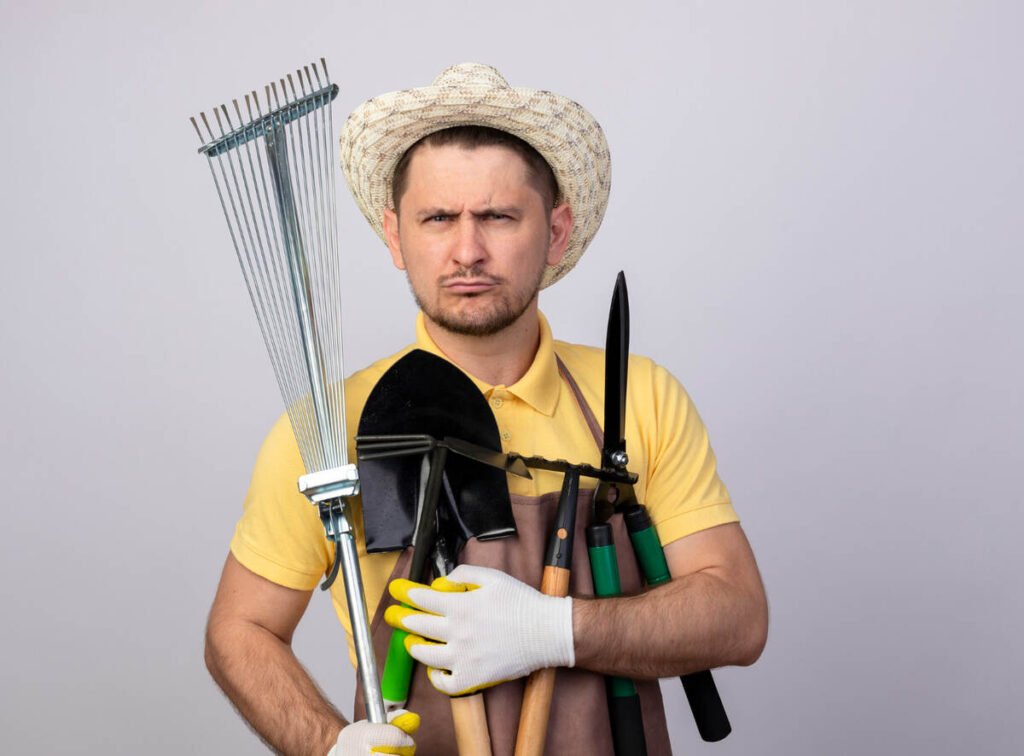Physical Address
304 North Cardinal St.
Dorchester Center, MA 02124
Physical Address
304 North Cardinal St.
Dorchester Center, MA 02124

Extend the Life of Your Gardening Tools—because these trusted companions deserve more than rust and wear. There’s something incredibly satisfying about digging into the soil with your favorite trowel or trimming overgrowth with perfectly balanced clippers. But like any good relationship, your tools need care to last.
If you’ve ever reached for a rusty shovel or struggled with dull shears, you know how frustrating it can be to disrupt your gardening flow. The good news? A few smart habits can go a long way.
In this guide, you’ll discover 5 brilliant hacks to extend the life of your gardening tools—so you can focus more on planting and less on replacing.

Your tools are an investment, and proper care not only saves you money but also improves safety and efficiency. According to the University of Minnesota Extension, regular maintenance prevents rust, preserves blades, and keeps handles intact.
Benefits of maintaining your gardening tools include:
It may sound basic, but most tool damage starts with neglect after use. Dirt holds moisture, and moisture breeds rust. Keeping your tools clean is the first step to prolonging their usefulness.
What to do:
Pro Tip: Avoid soaking wood handles, as this can cause swelling and cracking over time.
Best For: Shovels, hoes, trowels, rakes
Dull blades not only make your job harder, but they also damage plants by tearing rather than cutting cleanly.
What to do:
Frequency: Every 3–4 uses, or at the start and end of each season
Best For: Pruners, shears, loppers, spades
Resource: The Royal Horticultural Society offers excellent blade sharpening guides.
This is an old-school trick that works wonders. By storing metal tools in a sand-and-oil mixture, you keep them clean, sharp, and rust-free.
What you need:
| Tool Type | Rust Risk Level | Ideal for Sand Bucket? |
|---|---|---|
| Pruners | High | No (use cloth oiling) |
| Shovels | Medium | Yes |
| Hand Trowels | High | Yes |
| Hoes | Medium | Yes |
Best For: Small metal tools used frequently
Wood can crack, splinter, and rot when exposed to the elements. Proper care keeps handles strong and splinter-free.
What to do:
Frequency: At least once a season
Best For: Rakes, hoes, spades, loppers
Even the best-maintained tools won’t survive long if left exposed to rain, snow, or UV rays.
What to do:
Bonus Hack: Add chalk or charcoal to your storage area—they help absorb humidity.
Best For: All tools, especially those with metal parts
Clean after every use and sharpen every few uses or at least once per season to keep your tools efficient and safe.
Boiled linseed oil for wood, and mineral or vegetable oil for metal parts. Avoid motor oils—they’re toxic to soil and plants.
Yes, WD-40 can be used on metal parts, but for regular maintenance, natural oils are safer for the garden.
Moisture, soil residue, and improper storage are the most common culprits. Keeping tools dry and oiled helps dramatically.
You don’t need fancy equipment or hours of spare time to care for your gardening tools. These 5 brilliant hacks to extend the life of your gardening tools can be done with simple materials and consistent habits.
When you take care of your tools, they’ll take care of your garden in return. Cleaner cuts, better ergonomics, and longer-lasting gear all contribute to a more joyful and productive gardening experience.
Share this article with your fellow green thumbs and check out our blog for more down-to-earth gardening wisdom.